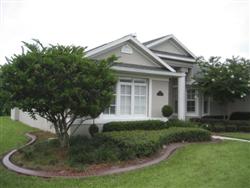







Kwik Kerb Curbing
Landscape Design
Ground Cover
Landscape Lighting
Pressure Cleaning
Irrigation
Patios, Walks and Walls
Decks, Arbors and Pergolas
Recent Projects


Landscape Lighting: Installation
Mounting the Transformer
Mount the transformer next to a grounded indoor or outdoor outlet. If the transformer is installed outside, mount it at least one foot above the ground. It can be mounted on a wall, fence, post, etc. Follow the specific installation instructions provided with your power console.


Running the Cable
Next, lay the cable out on top of the ground in the configurations needed to reach every fixture. Then, connect all the fixtures. Test the voltage at each fixture with your meter. This allows for easy adjustments to the cable runs while it is still above ground.
Then, you may want to wait until dusk to visually adjust the fixtures to achieve maximum effect. After these steps, the cable can be buried.
Because you are working with a low voltage system, hiding the cable is simple. You may choose to cover it with some soil, mulch or other landscape dressing. Or if you are close to bushes or dense shrubbery, you can push it underneath and out of sight. You could also lay it along a fence or nearby foundation.
If you are crossing a lawn, you will want to wedge the surface at a 45° angle. Pull up the sod, place the cable at least 4" deep (to prevent future problems if the lawn is aerated) and replace the sod firmly.
Installing the Fixtures
Each fixture is packaged with installation instructions that will tell you step-by-step how to properly install your system. Refer to those instructions for specific requirements. The following instructions were designed to supplement the instructions for fixtures that need extra care.
Inground Fixtures Inground fixtures require some extra attention. They provide an unobstructed view of the landscape at night. Inground fixtures should be used primarily where they will remain permanently. For example, they could be used to light buildings, fences, mature trees, flag poles, etc. However, when installing an inground beneath a tree, do not forget that cutting into the roots may damage the tree or even kill it. Try to use fixtures that are less than 12" deep for tree uplighted when placing the fixture under the canopy of the tree.
Another consideration to make with ingrounds is drainage capabilities. Because the fixtures are inground, there is always the problem of moisture. Provide a 3" drainage bed of granular material as recommended in the packages instructions. Sealing the fixture as recommended in the instructions will help insure warranty coverage.
Tree Mounted Fixtures
The first thing to consider is that lamps in the fixtures will have to be replaced periodically. This obviously means that someone will have to climb up into the tree every so often to take out the old lamp and put in a new one. Make sure you have a way of maintaining the fixtures before you install them.
The second consideration is the means of fastening the fixtures. You must use fasteners that are constructed of stainless steel or cadmium-plated steel. Never use brass or copper fasteners in a tree. Brass and copper oxidize over time, poisoning the tree. The fasteners should also be adjustable to allow for growth, upward and outward.
Care should be taken when aiming the fixtures to eliminate direct glare from the lamp and the long directional shrouds should never be used. Consider that the tree may lose its leaves in the fall.
Since trees come in all shapes and sizes, there are several ways to enhance them. You will not want to light an evergreen the same way you light a Chestnut tree. Here are some tips for lighting various types of trees from the ground:
Conifers: The foliage is dense and narrow. Place the fixture(s) away from the base and aim light toward the top of the tree.
Flowering Deciduous (Dogwood, Fruit, etc.): Place the fixtures away from the base and aim toward the top. Their beauty is at the tips of their branches where the blossoms and fruit grow.
Deciduous, Dense Canopy: Place fixtures along the outer edges to focus light into the foliage. These trees have interesting bark and elaborate branch structures. Use more than 1 fixture to highlight these areas
Deciduous, Open Canopy: These open canopies and palms can be grazed with light from underneath. Place the fixture(s) close to the base of the tree.
Moonlighting
Undeniably one of the most beautiful landscape lighting techniques, moonlighting, simulates the natural light of a full moon, filtering through the branches of a tree. It is one of the most beautiful and one of the most difficult effects to achieve.
When creating the moonlighting effect, remember to place one or two fixtures above eye level aimed upward to illuminate the top of the tree's canopy. The number of fixtures placed in the downlighting position is dependent on the physical size of the tree as well as the density of its foliage.

